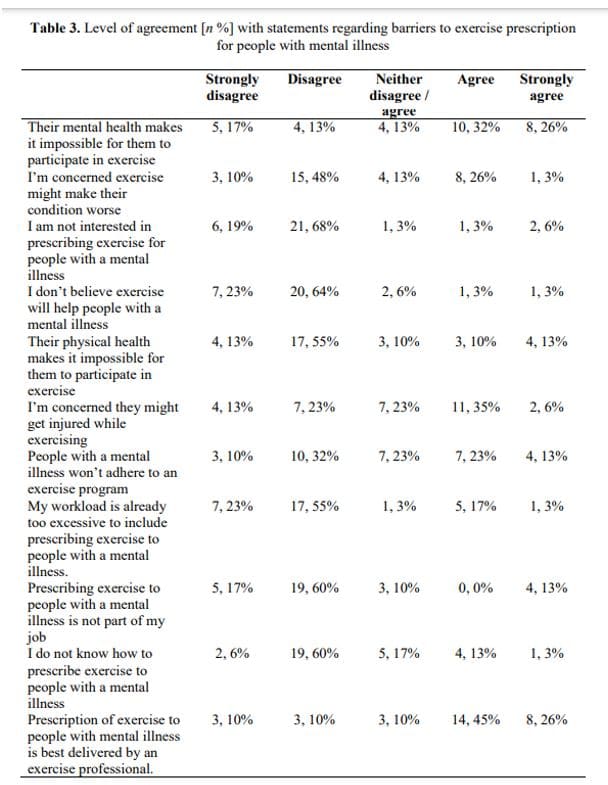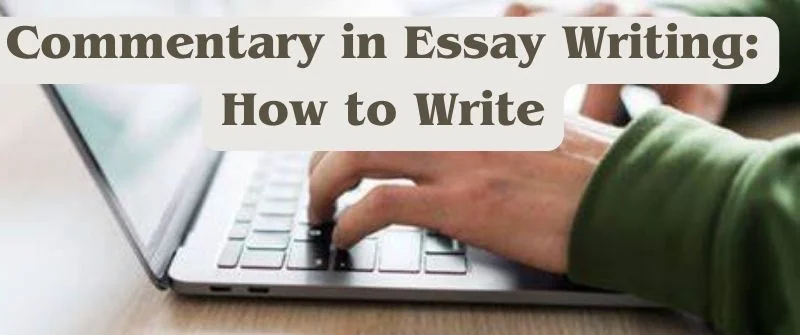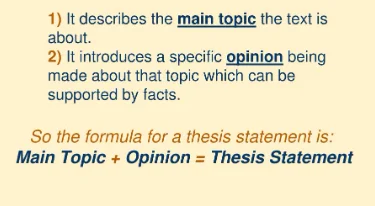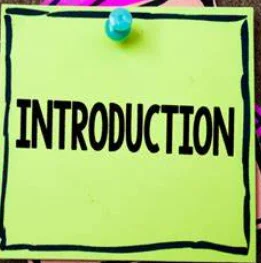When You Write

From Summary to Insight: A Guide to Writing Commentary Essays with Depth
Writing an essay can be daunting, let alone if you’re also providing commentary on it. But the reward of a job well done is worth the effort when you’re finished!
It has been noted that essays with thoughtful commentaries have a higher chance of being accepted for publication. So I’m here to help make it clear that essay writers need to understand the power of commentary and how to incorporate it into their work.
In this article, I’ll share my experience as a writer and provide insight on how to make your voice heard in an essay by using effective commentary. By following my advice, you’ll be able to craft a piece that stands out from the crowd and makes your thoughts shine through!
What Is Commentary In An Essay?
Over the course of your writing, you may have heard of the term ‘commentary’ in relation to essay writing. But what does it mean?
Simply put, commentary is analysis. It’s when you take a text and try to identify the deeper implications at play. In literary texts this could be symbolism, metaphors or dual meanings; with non-fiction texts it could include examining how an author makes use of evidence and arguments to support their position.
Writing a commentary essay requires close reading skills and the ability to interpret a wide range of information. It also requires you to think critically about how ideas are connected and draw conclusions about why certain elements are included in the text.
Commentary is an essential part of any essay because it allows your reader – who may not be as familiar with the text as you – to understand why you have drawn certain conclusions based on your interpretation.
It’s like giving them a guided tour through your thoughts and ideas so they can explore what makes your argument unique and interesting. Commentary also enables you to make connections between different aspects of the text that might not be obvious on first glance, helping bring out its significance even further.
By using commentary effectively, you can write an engaging essay that really gets your point across clearly.
The Significance Of Commentary In Essay Writing
Writing commentary in an essay can be a powerful tool for communicating ideas and arguments. It is essential to engage in critical thinking, interpretation, and analysis when writing commentary. Writing effective commentary requires the ability to construct a well-developed argument that supports the main point of the essay.
Here are 4 key elements of effective commentary:
- A clear thesis statement
- Relevant evidence that supports the argument
- Interpretation and analysis of the evidence
- A conclusion that summarizes the argument
Commentaries should be written with an engaging style that encourages readers to think critically about the topic at hand. Good literary commentary should be accessible, yet thought-provoking; it should both inform and entertain the audience. Additionally, it should challenge preconceived notions about a subject and provide an insightful perspective on why something matters or how it affects our lives.
In order to write effectively, one must first understand their audience and what they hope to communicate through their words. With this knowledge in mind, one can craft a compelling commentary that offers fresh insight into any given topic.
Transitioning seamlessly into the next section…
Key Elements Of Effective Commentary
Like the rising sun that signals a new day, effective commentary can offer a fresh perspective to an essay. With the right words and emphasis, it can engage readers in an entirely new way and bring them closer to understanding your argument.
Like a shimmering beacon of light, it has the power to grab their attention and draw them into your ideas.
Commentary does more than just summarize facts or provide background information – it also evaluates, interprets, and analyses information.
It’s an opportunity for you to delve into the heart of what you’re writing about, offering insight into its significance and exploring potential implications. By taking this approach, you can evaluate the importance of each point and develop your thesis with greater clarity.
Through thoughtful commentary, you can make connections between ideas that your readers may not have previously considered and help them reach their own conclusions about your argument.
Strategies For Writing Potent Commentary In Essays
Writing potent commentary in essays is essential to making a successful argument and gaining the reader’s interest. Here are four strategies that can help you write a good essay commentary:
Develop a strong thesis statement
A thesis statement serves as the core of your essay, and it should be explicit, engaging and supportable by evidence. It should also be concise so that readers can understand your main message immediately.
Understand the topic better
Spend some time researching the topic before you start writing to ensure you have a thorough understanding of it. This will give your commentary more depth and clarity.
Body And Paragraphs Organized
Make sure your body paragraphs are organized logically and clearly explain how your points relate to the overall theme or argument of your essay.
Each paragraph should have a single purpose, and make sure that all sentences within each paragraph work together to support that purpose.
Use literary analysis
When writing your commentary you can draw on elements like tone, imagery, diction, and syntax to make your argument more persuasive and compelling for readers. This will also help them better understand what you’re trying to communicate in your essay.
By incorporating these strategies into your essay writing process, you can create powerful commentary that effectively supports your argument and engages readers with meaningful insight into the text or topic at hand. With these tips in mind, let’s look at how to use quotations and examples in commentary to further enrich our arguments!
The Use Of Quotations And Examples In Commentary
Now that we’ve discussed strategies for writing powerful commentary in essays, let’s explore the use of quotations and examples when constructing these sentences.
Quotations and examples are essential for making strong commentary sentences that support an argument or analysis. When used correctly, they can be a great way to illustrate a point and add interest and texture to your argument.
When including a quotation in your commentary, it is important to make sure it is properly attributed. You should include both the author’s name and the source from which the quote was taken. This not only strengthens your argument by adding credibility, but it also shows you have done your research.
Examples are also effective for proving a point or introducing a new concept. They help to break up longer paragraphs, explain difficult concepts in more detail, and provide evidence or substantiation for an idea or opinion. When using examples in commentary sentences, it is important that they are relevant to the topic at hand and accurately represent what you are attempting to say in your essay.
With this information in mind, let’s move on to examining types of commentary in essays; comprehending the contrasts.
Types Of Commentary In Essays: Comprehending The Contrasts
As a student writing a commentary essay, it is important to understand the differences between analyzing, summarizing, and evaluating. To help comprehend these contrasts, let’s take a look at four main points:
1. Analyzing – Looking closely at something and breaking it down into smaller parts to better understand it.
2. Summarizing – Taking the information from a larger group of data and boiling it down into its key elements.
3. Relating – Exploring how two or more ideas are connected and how they affect each other.
4. Evaluating – Examining different aspects of an issue or argument and determining its worth or value by expressing an opinion about it.
Using these four points as a framework for writing your commentary essays can help you to be more effective in your analysis, summary and evaluation of any given topic.
Furthermore, this knowledge will also serve you well when crafting strategies for writing literary essays that contain thoughtful commentary elements.
With this in mind, let us now turn our attention to creating such strategies…
Strategies For Writing Commentary In Literary Essays
Having discussed the differences between types of commentary, let’s now turn to strategies for writing effective commentary in literary essays.
When it comes to providing commentary, it is important to understand that you are making a statement about something; whether it be an interpretation or opinion, you need to make a clear statement.
You should also comment on any phrases or passages that have stood out and explain why they are significant.
It is also important to identify the underlying message of the text. This means going beyond surface-level analysis and delving into the deeper meaning of the work.
To do this, think about what is not being said as much as what is being said.
Make sure your comments add depth to your analysis and provide new insights for your readers.
Finally, take care when constructing your sentences so that your points come across clearly and convincingly.
Writing Commentary For Convincing Essays
I’m sure you’re excited to finally get started on writing your commentary for a convincing essay! It can be intimidating to write about something without knowing what type of essay you’re working on. But if you take the time to read through the assignment and passage, you’ll have a much better idea of what you need to write.
When it comes to writing your commentary, try not to worry too much about “sounding smart” or “having all the right answers.” Instead, focus on writing like yourself—in your own voice, with your own ideas. The more authentic and engaging your writing is, the more persuasive it will be to readers.
So don’t be afraid to express yourself—you may just surprise yourself with how creative and interesting your thoughts can be! With that said, let’s move on to creating commentary that supports your thesis statement.
Creating Commentary That Supports Your Thesis Statement
As the saying goes, hindsight is 20/20. Looking back now, it’s clear that writing an effective commentary for a convincing essay requires some finesse and insight.
When starting to write, it’s important to have a good understanding of the topic you are discussing and to provide enough context for your audience to understand what you are discussing. Additionally, it helps to have an understanding of opposing viewpoints before you start writing so that you can avoid falling into common traps.
To create commentary that supports your thesis statement effectively, there are a few things you need to keep in mind:
1. Make sure your argument is sound and won’t be easily refuted by an opposing point of view.
2. Avoid introducing new evidence or topics in your commentary; instead focus on the evidence already presented in the essay body.
3. Take the time to help explain why certain evidence matters and why readers should care about it.
The goal of commentary is not just to express an opinion but also provide meaningful analysis that will help prove or disprove a point of view. By being mindful of these considerations when writing, it is possible to create effective commentary that will help readers better understand your argument and its implications.
Common Mistakes To Avoid In Commentary Writing
I think one of the biggest mistakes I can make when writing a commentary essay is to overgeneralize my points. It’s important to provide specific examples and evidence to back up my opinion and avoid making sweeping conclusions.
Additionally, when writing a commentary essay, it’s also easy to forget to include evidence to support my argument. Making sure to include evidence will make my piece of writing much more convincing and credible.
Avoiding Overgeneralization
When writing a commentary essay, it’s important to avoid overgeneralizing your topic.
Sure, it may be tempting to make sweeping statements about the issue at hand, but this won’t do justice to your argument.
Instead, try to focus on concrete evidence and facts that back up your opinion.
For example, include statistics or subjective accounts from experts in the field.
This will ensure that you don’t come off as too biased or uninformed in your commentary.
By avoiding overgeneralization and being specific in your evidence, you can present a much more convincing argument and captivate readers with innovation.
Remember: always strive for accuracy when building an argument!
Lack Of Evidence
When it comes to commentary writing, one of the biggest mistakes people make is not having enough evidence to back up their argument. Without any supporting evidence, your argument can easily be dismissed as biased and uninformed.
This is especially true when discussing contentious topics like politics or religion. It’s important to remember that you’re usually assigned a commentary essay for a reason—so make sure you have enough facts and figures to give your readers an informed opinion. Otherwise, you may struggle to convince them of your point of view.
To make sure your argument stands out from the crowd, research extensively and use concrete evidence whenever possible. This will show that you’ve put in the effort and will help ensure a more innovative outcome for your audience.
Tips For Revising And Editing Commentary
Revising and editing your commentary is an important step in writing an essay. It helps to ensure that you are conveying the most accurate and persuasive message.
To do this, it’s important to read through your writing again and summarize any points that you noticed while reading. This will allow you to make sure that each point is clear and concise. As students need to be able to write effectively, it is also important to pay close attention to the language used throughout the essay.
Looking for words that could be replaced with more precise ones or focusing on certain aspects of literature can help bring life to a paper.
It is also essential to check for grammar, spelling, punctuation, and other errors before submitting the essay. Making sure all of these elements are correct can help enhance the paper’s overall quality.
Additionally, as you review your work, look for any areas where clarification may be necessary. Taking a second look at what you wrote will help ensure that the reader fully understands all of your points and implications.
By following these tips when revising and editing commentary in an essay, readers can gain a clearer understanding of the author’s intended message.
Examples Of Strong And Poor Commentary In Essays
A necessary part of writing an essay is the commentary. It’s the all-important part that allows for a deeper understanding of what is being written and allows the reader to get a fuller picture of the writer’s thoughts.
Unfortunately, not everyone understands the need to understand commentary. Many writers think they can simply paraphrase their sources without paying attention to how they are using irony or antithesis, missing out on valuable opportunities to add depth and complexity to their work.
Commentary should be used to engage readers in a way that speaks directly to their subconscious desire for innovation. It should be written in a personal tone of voice with contractions and an engaging style that will grab readers’ attention and make them want more.
If done correctly, it can bring new life and insight into an essay, allowing it to stand out from the rest.
Paragraph Construction With Commentary
In this section, I’m going to be talking about paragraph construction with commentary. As part of writing an essay, it is important to think about how you are going to use literary elements and techniques to convey your main idea or argument. I was always taught by my instructor that the way you structure your paragraphs can really make a difference in how effective your message is.
So, let’s take a look at some tips for constructing well-crafted paragraphs that provide an engaging commentary.
First of all, try not to write too long of a sentence as this can lead to confusion for the reader.
Secondly, make sure that each paragraph has one clear point that ties back into the main argument or idea you are trying to convey in your essay.
Finally, use transition words and phrases as needed throughout the essay so that readers can easily follow along with your discussion.
All these steps help ensure that readers understand and appreciate what you have written in your essay. With these tips in mind, let’s move on to discussing transition words and phrases for commentary.
Transition Words And Phrases For Commentary
In the world of higher education, commentary is a powerful tool that can bring literature to life in a way that no other piece can. It’s almost magical how one can take an otherwise mundane poem and turn it into something extraordinary with just a few words. Commentary has the ability to transform isolation into coherence in ways that are simply astounding!
Here is a 4-point list for successful commentary:
1. Read the text multiple times before writing any comments.
2. Take notes on what stands out most to you.
3. Use concrete examples from the text to better illustrate your points.
4. Be sure to engage with your audience in a way that encourages them to think more deeply about the subject matter at hand.
Commentary is an invaluable skill for anyone looking to make their mark on a piece of literature, so use it wisely and always strive for excellence! With this knowledge, we can now move on to exploring how to write a conclusion with commentary – do’s and don’ts included!
Writing A Conclusion With Commentary: Do’s And Don’ts
Now that you know the transition words and phrases for commentary, it’s time to learn how to write a conclusion with commentary. It can seem complicated, but it doesn’t have to be.
One of the most important things to remember is not to rely too heavily on your homework. Spending too much time memorizing facts and figures won’t help you in the long run when it comes to showcasing your opinion. Therefore, try to focus on critical thinking skills instead of wasting time studying for hours on end.
While two sentences are usually enough for a conclusion, make sure that each one packs a punch and is full of insight and analysis. Hone your skills by getting feedback from others so you can refine your writing and develop a style that resonates with any reader.
This can help ensure that your concluding remarks leave an impactful impression on those who read them.
Overall, effective commentary is essential for producing a successful essay.
Writing commentary allows you to demonstrate your understanding and personal thoughts on the topic and can really amplify your argument.
By incorporating examples, quotations, and other evidence into your commentary, you are able to bring life to your writing in a manner that will make it stand out from the crowd.
As an age-old proverb says, “A picture paints a thousand words”; similarly, strong commentary paints an even grander picture of your argument.
With these tips in mind, I look forward to seeing you all write some truly standout essays!
Recommended Reading...
Breaking down essays: how many paragraphs should you have, how to become a ghostwriter, how to become a fortune cookie writer, what is technical writing.
Keep in mind that we may receive commissions when you click our links and make purchases. However, this does not impact our reviews and comparisons. We try our best to keep things fair and balanced, in order to help you make the best choice for you.
As an Amazon Associate, I earn from qualifying purchases.
© 2024 When You Write
Commentary Essay Example, Writing Guide, and Tips

Introduction
Welcome to The Knowledge Nest, your go-to resource for all things related to commentary essay writing. In this comprehensive guide, we will walk you through the process of crafting an impactful commentary essay, providing useful examples and valuable tips to help you enhance your writing skills.
What is a Commentary Essay?
A commentary essay is a type of academic writing that aims to analyze and provide an in-depth interpretation of a particular text or topic. It offers a critical examination and evaluation of the subject matter, exploring various perspectives and providing evidence-based arguments to support the author's viewpoint.
Why Write a Commentary Essay?
Writing a commentary essay allows you to develop critical thinking skills, enhance your analytical abilities, and strengthen your written communication. It provides a platform to express your ideas and opinions, engage with different viewpoints, and present a well-rounded analysis of the chosen subject matter.
Key Components of a Commentary Essay
1. Introduction: Begin your essay with a captivating introduction that presents the topic and provides context for the reader.
2. Thesis Statement: Craft a clear and concise thesis statement that outlines your main argument or perspective.
3. Body Paragraphs: Develop your analysis in well-structured body paragraphs, each focusing on a specific point or theme. Use relevant evidence, examples, and expert opinions to support your claims.
4. Counterarguments: Address potential counterarguments or alternative viewpoints and offer thoughtful rebuttals to strengthen your position.
5. Conclusion: Summarize the main points of your essay and reiterate your thesis statement, leaving the reader with a lasting impression.
Step-by-Step Guide to Writing a Commentary Essay
Step 1: choose a relevant topic.
Select a topic that aligns with your interests and falls within the scope of your assignment or academic requirements. Consider the relevance and significance of the subject matter to engage your readers.
Step 2: Conduct Extensive Research
Gather information from credible sources such as academic journals, books, reputable websites, and scholarly articles. Engage with different perspectives and take diligent notes to support your analysis.
Step 3: Outline Your Essay
Create a clear and well-structured outline that outlines the main points, arguments, and supporting evidence you will present in your essay. A well-organized outline ensures a cohesive and logical flow of ideas.
Step 4: Craft an Engaging Introduction
In your introduction, provide a brief overview of the topic and its significance. Hook the reader's attention with an intriguing opening sentence or a thought-provoking question.
Step 5: Develop Your Arguments in the Body Paragraphs
Divide your essay into distinct body paragraphs, each focusing on a specific point or theme. Begin each paragraph with a topic sentence that establishes the main idea, and support it with relevant evidence, examples, and analysis.
Step 6: Address Counterarguments
Acknowledge alternative viewpoints and counterarguments to demonstrate your awareness of different perspectives. Articulate thoughtful rebuttals that strengthen your arguments and distinguish your viewpoint.
Step 7: Conclude with Impact
In your conclusion, summarize the main points of your essay and restate your thesis statement. Leave the reader with a compelling closing thought or call-to-action that invites further reflection or discussion on the topic.
Commentary Essay Example
To provide you with a better understanding, let's consider an example of a commentary essay on the topic of climate change:
Introduction:
Climate change has emerged as one of the most pressing global issues of our time. This commentary essay aims to analyze the causes, impacts, and potential solutions to address this environmental crisis.
Body Paragraph 1: The Causes of Climate Change
The first body paragraph delves into the primary causes of climate change, such as greenhouse gas emissions, deforestation, and industrialization. It explores how human activities have contributed to the accelerated pace of global warming.
Body Paragraph 2: The Impacts of Climate Change
In the second body paragraph, we examine the far-reaching impacts of climate change on ecosystems, weather patterns, and human livelihoods. We explore the devastating consequences of rising sea levels, extreme weather events, and the loss of biodiversity.
Body Paragraph 3: Potential Solutions to Climate Change
The third body paragraph focuses on potential solutions to mitigate and adapt to climate change. It explores renewable energy sources, sustainable agricultural practices, and international collaboration as key strategies to combat this global crisis.
Conclusion:
In conclusion, the commentary essay emphasizes the urgent need for collective action to address climate change. By understanding its causes, impacts, and potential solutions, we can work towards a sustainable future for generations to come.
Writing a commentary essay enables you to dive deep into a specific topic, critically analyze it, and articulate your thoughts effectively. By following our comprehensive guide and utilizing the provided tips, you will be well-equipped to create impactful commentary essays and improve your writing skills.
Enhance Your Writing Skills with The Knowledge Nest
At The Knowledge Nest, we are committed to providing valuable resources and expert guidance to help you excel in your academic and professional pursuits. Explore our wide range of articles, guides, and examples to enhance your writing skills and expand your knowledge across various disciplines.

Coca Cola Social Responsibility: How They Approach It

How To Write Academic Papers? - Studybay

Excellent Turning Point Essay Tips with Samples - Studybay

How to Write an Interview Report That Stands Out

Guide: How To Write A Chemistry Lab Report - Studybay

How to Write a Good Discussion Paper?

Law Coursework Help - Studybay

Cheap Coursework Writing Service - Studybay

Dissertation Help Service - Studybay

How to Write a Perspective Essay?
- PRO Courses Guides New Tech Help Pro Expert Videos About wikiHow Pro Upgrade Sign In
- EDIT Edit this Article
- EXPLORE Tech Help Pro About Us Random Article Quizzes Request a New Article Community Dashboard This Or That Game Popular Categories Arts and Entertainment Artwork Books Movies Computers and Electronics Computers Phone Skills Technology Hacks Health Men's Health Mental Health Women's Health Relationships Dating Love Relationship Issues Hobbies and Crafts Crafts Drawing Games Education & Communication Communication Skills Personal Development Studying Personal Care and Style Fashion Hair Care Personal Hygiene Youth Personal Care School Stuff Dating All Categories Arts and Entertainment Finance and Business Home and Garden Relationship Quizzes Cars & Other Vehicles Food and Entertaining Personal Care and Style Sports and Fitness Computers and Electronics Health Pets and Animals Travel Education & Communication Hobbies and Crafts Philosophy and Religion Work World Family Life Holidays and Traditions Relationships Youth
- Browse Articles
- Learn Something New
- Quizzes Hot
- This Or That Game New
- Train Your Brain
- Explore More
- Support wikiHow
- About wikiHow
- Log in / Sign up
- Occupations
- Media Careers
How to Write a Commentary
Last Updated: May 19, 2023 Fact Checked
This article was co-authored by Richard Perkins . Richard Perkins is a Writing Coach, Academic English Coordinator, and the Founder of PLC Learning Center. With over 24 years of education experience, he gives teachers tools to teach writing to students and works with elementary to university level students to become proficient, confident writers. Richard is a fellow at the National Writing Project. As a teacher leader and consultant at California State University Long Beach's Global Education Project, Mr. Perkins creates and presents teacher workshops that integrate the U.N.'s 17 Sustainable Development Goals in the K-12 curriculum. He holds a BA in Communications and TV from The University of Southern California and an MEd from California State University Dominguez Hills. There are 8 references cited in this article, which can be found at the bottom of the page. This article has been fact-checked, ensuring the accuracy of any cited facts and confirming the authority of its sources. This article has been viewed 675,008 times.
At some point in your life, you'll probably have to write a commentary. Whether you're a teacher, editor, student, or amateur critic, knowing how to constructively analyze someone's work is a useful skill. There isn't a magical formula for writing a commentary. The commentary you write depends upon what you're reviewing, why you're giving feedback, and what you think about the work. No matter what you’re working on, having a clear goal and strong writing will help make your commentary successful.
Writing a Literary Commentary

- Your thesis is your argument or your point of view. This is where you take a stance, and spend the rest of the essay supporting your thesis.
- Maybe you are writing a commentary on Great Expectations . Your thesis could be, “Not only is Dickens’ tale engaging, it is also an insightful commentary on the differences between social classes in industrial Britain.”
- You might write at the top of your outline, “Important Themes in Great Expectations”. You could then make bullet points such as “Setting”, “Ambition”, “Class”, etc.

- You might start by saying, “ Great Expectations is full of imagery that makes the reader feel as if they are in 19th century England with Pip. Dickens’ novel about class, ambition, and love sheds important light on the social divides of the time.”
- You could then list the themes that you will discuss in the body of your commentary.

- An excellent specific example to illustrate this theme is pointing out that the character remains in her wedding dress, despite being jilted decades before.

- You might write something like, “Miss Havisham is an example of the theme that love can sometimes go terribly wrong. This is also an important theme when examining the relationship between Pip and Estella.”
- Make sure to use smooth transitions. When you move to a new example, use a good transition word or phrase. Some examples are “similarly”, “conversely”, and “again”.

- In your commentary on Great Expectations , you would want to make sure that you emphasize your summary again: this is a good example of class divisions and how ambition is not always the best quality.
- You might also choose to compare it to another book from the same period to illustrate why the work by Dickens is significant. However, you generally shouldn’t introduce new information in your conclusion.
Creating Data Commentary

- You might also be asked by your boss or teacher to write a data commentary. Make sure to ask about their expectations, such as length.

- For example, if the research is about the graduation rate in the Chicago Public Schools, you need to explain the numbers and illustrate why the results are important.

- You might say something like, “As shown in Figure 1.2, the costs of healthcare have risen at a steady rate since 2000.”

- As in the rest of your data commentary, your conclusion should refer to specific pieces of data.

- You should include a specific section for resources at the end of your data commentary.
- Any time you cite numbers or a quote, make sure to provide a reference.
Commentary Outlines

Expert Q&A

- If you are writing a commentary for a class, make sure to carefully follow the instructions. Thanks Helpful 0 Not Helpful 0
- Make sure to carefully edit and polish your writing. Thanks Helpful 0 Not Helpful 0

You Might Also Like

- ↑ https://www.bucks.edu/media/bcccmedialibrary/pdf/HOWTOWRITEALITERARYANALYSISESSAY_10.15.07_001.pdf
- ↑ Richard Perkins. Writing Coach & Academic English Coordinator. Expert Interview. 1 September 2021.
- ↑ http://www.udc.edu/docs/asc/Outline_Structure_for_Literary_Analysis_Essay_HATMAT.pdf
- ↑ https://www.germanna.edu/wp-content/uploads/tutoring/handouts/Literary-Analysis.pdf
- ↑ https://writingcenter.unc.edu/writing-data-commentary/
- ↑ https://ebooks.hslu.ch/academicwriting/chapter/4-5-results/
- ↑ https://warwick.ac.uk/fac/arts/modernlanguages/intranet/undergraduate/skills/commesswriting/commentarywriting/
- ↑ https://www.ncbi.nlm.nih.gov/pmc/articles/PMC4789530/
About This Article

To write a commentary, write about your observations and analysis of the text you read. You should craft a clear and specific thesis statement about the novel, poem, or play you are evaluating. Your thesis statement should explain your stance or argument about the text. Use this thesis statement to build a brief outline of your commentary and then choose specific details from the text to support your argument. Then, add an introduction to give your reader some context for the themes you will discuss. For tips from our Education reviewer on how to write a data commentary, read on! Did this summary help you? Yes No
- Send fan mail to authors
Reader Success Stories
Nov 15, 2016
Did this article help you?

Eserbellra Marylao
Mar 20, 2016
Abee Victory
Sep 17, 2020
Aug 19, 2022
Prudence Orji
May 5, 2019

Featured Articles

Trending Articles

Watch Articles

- Terms of Use
- Privacy Policy
- Do Not Sell or Share My Info
- Not Selling Info
Get all the best how-tos!
Sign up for wikiHow's weekly email newsletter
What Is a Commentary in an Essay | Writing Guide & Examples
22 December 2023
last updated
When people need to express their thoughts or ideas about something, they need guidelines on how to write a commentary essay. This article begins by defining what is a commentary essay, its meaning, and outlining its basic structure. Some insights students can learn are that introductions should have hooks, background information, and thesis statements. Body paragraphs of a commentary essay should have topic sentences; evidence, mainly quotes; comments after the evidence; and transitions. The conclusion part should restate the thesis and summarize the main ideas. This guideline also gives a sample outline template, possible topics, and a practical example of a commentary essay. Lastly, the article teaches students 10 dos and 10 don’ts and 20 tips for writing a high-standard commentary essay.
How to Write an Outstanding Commentary Essay & Examples
Reading is an academic exercise that develops a person’s mental faculties of intellect, memory, reason, intuition, perception, and imagination. These faculties develop when people utilize what they have acquired through reading to write different types of papers , including essays, reports, and research papers. Therefore, reading and writing are related because they both induce intellectual development. This guideline on how to write a commentary in an essay teaches students and anyone passionate about writing how to create a good argumentative position that meets the quality standards for intellectual discourse and publication. The guideline also offers vital insights, including the definition of what is a commentary essay, its basic essay structure , different types, possible essay topics, 10 dos and 10 don’ts, and 20 tips for producing a high-standard essay. Therefore, reading this guideline is beneficial to students and others who may, from time to time, write a commentary in an essay to communicate ideas to specific audiences.

Definition of What Is a Commentary in an Essay and Its Meaning
From a definition, a commentary is a descriptive account of an event, an expression of opinions about a political, economic, social, or cultural issue, or elucidating a point or topic of public interest. From this perspective, a commentary essay is a document that students write to express opinions about an issue or topic through a descriptive expression and explanation of ideas. In this respect, a commentary essay differs from other types of essays , including an argumentative essay , a personal narrative , a cause and effect essay , compare and contrast essay , or a problem and solution essay , as well as a report and a research paper , because it means expressing the writer’s perspective concerning an issue or topic. Commentaries are products of a critical analysis of societal problems across political, economic, social, and cultural dimensions. When writing a commentary essay, students should analyze and interpret the source under discussion, such as a text, film, article, video, advertisement, event, object, subject, book, poem, speech, presentation, literary work, novel, sculpture, or image, among others, using a basic sandwich rule: giving a commentary after each quote or citation.
Use exceptional writing services that guarantee original and well-researched papers.
Basic Structure of a Commentary Essay
Like other texts, a commentary paper has a basic essay structure that dictates how writers should organize their content. This structure has three components: an introduction , a body , and a conclusion . The introduction is where writers introduce their assigned topics using a hook , context, and an argumentative thesis statement . Although this type of commentary essay is not an argumentative essay, an argumentative thesis indicates the writer’s perspective on the issue, which can be contentious in the eyes of readers. The body of a commentary essay is where authors construct a defense of their perspective through body paragraphs; each body paragraph should have a topic sentence that establishes a claim ; supporting evidence, like quotes, data, or examples; a commentary that analyzes and explains information cited in an essay; and a concluding sentence with a transition to create a logical connection to the next paragraph. In turn, the conclusion restates the thesis and makes a final remark.
5 Main Types of Commentary
Because a commentary in an essay expresses the writer’s perspective about an issue, idea, or topic, it is evident in the body section of a commentary essay, where people describe their perspectives every time they provide evidence. In this respect, there are different types of commentary. The first one is an opinion essay where writers analyze evidence, such as a quote, text, or image, and state their stands with their critics. The second type of a commentary essay is an interpretation, where authors explain a complex concept to enhance the reader’s understanding. The third type is character or subject’s feelings, where students depict the emotional state of the person they have described in a commentary sentence. The fourth type of commentary essay is a personal reaction, where people communicate their stances on an issue, while the fifth type is an evaluation, where writers evaluate a section and gives a critical judgment.
Alternative Commentary Types and Examples
Besides the types of commentary above, students may write alternative commentary types when their essay is part of a bigger writing project, such as a systematic exposition of an idea, theme, or topic. Students must know the unique features of each type, including when to use it, what to focus on, and how to organize a commentary essay’s content.

1️⃣ Close, Direct Analysis of Passages
An example of an alternative commentary is a close, direct analysis of robust passages from the source, such as an article, film, poem, literary work, book, or novel. In this respect, they are standard in bigger writing projects, like expositions or being part of a critic’s work. Students adopt this type of commentary when they have to read a passage in a text or pick a speech in a movie and write a film analysis essay that expresses the writer’s perspective on the central issues, ideas, or concepts. The following example of a commentary essay demonstrates a close, direct examination of the first stanza of the poem “Night Wind” by Christopher Dewdney:
Tonight the wind blows through
all the worlds I have known and
through all the lives I have led.
The wind blows in the trees,
deeper into each.
The wind blows forever,
strains like something
endlessly departing.
Restless, impatient,
it races without burden.
Example of a Commentary on Celebration of Nature in the First Stanza of Christopher Dewdney’s Poem “Night Wind”
Christopher Dewdney’s 1984 poem “Night Wind” celebrates nature by depicting the night wind as a permanent, free expression of nature. The poet describes the wind on a particular night in the first stanza. By using a first-person perspective in the first three lines, Dewdney depicts himself as an observer. This writing style expresses a personal dialogue in which the poet directly relates his senses, experiences, and impressions. Dewdney opens the poem with the words: “Tonight the wind blows through / all the worlds I have known and / through all the lives I have led.” In this passage, the author expresses to the reader how the unity of the wind in whatever time or place leaves a lasting impression on him. Ideally, he views the wind as an omnipresent force but also regards it as very transient and fleeting. The words “endlessly departing” indicate to the reader the sense that the wind encompasses the entire continuum of the poet’s existence. Nonetheless, it is always in a rush to be at another location. The reader gets the impression that wind is a celebration of nature when Dewdney mentions its interactions with nature: “The wind blows in the trees, deeper into each.” This statement induces an imagination of trees fighting against a pervasive wind. The poet ends the stanza by personifying the wind, and he assigns it human qualities of restlessness, impatience, and playfulness. In this respect, the first stanza uses the wind as a reason to celebrate nature.
2️⃣ Commentary Annotations
Annotations are another type of alternative commentary where writers use a short claim on a source, like a text, film, or image. This kind of commentary essay also looks like an annotated bibliography . Typically, writers adopt annotations when they need to explain complex words, phrases, or concepts to readers; give a historical or cultural context of the topic; support or challenge the author’s arguments in an essay; expose literary devices, like contrast, irony, or sarcasm, or rhetorical devices, like ethos, pathos, and logos; provide a personal interpretation of the text under analysis. Therefore, annotations aim to enhance the reader’s understanding of a short passage from a source. Below are three examples of annotations of complex content in writing a commentary essay for Christopher Dewdney’s Poem “Night Wind.”
3 Examples of a Commentary With Annotations
➖ “The night wind is an empire / in exodus, a deliverance / beside the dark shape of trees.”
This statement is in lines 13-15 of Dewdney’s poem, where the poet alludes to a biblical concept, exodus, to express the wind’s freedom. By stating that the wind is “… in exodus, a deliverance…,” Dewdney makes the reader compare the wind to the incident in the book of Exodus in the Bible where Moses leads the children of Israel, God’s chosen people, to Canaan, the promised land, after freeing a life of bondage in Egypt. In this respect, lines 13-15 confirm that the wind is free and expresses nature’s freedom.
➖ “The wind takes / me in its giddy rush and / gathers me into a storm of longing, / rising on wings of darkness.”
In this statement in lines 18-21, the phrase “wings of darkness” emphasizes the wind’s freedom and mystery. The poet contextualizes the wind as an unpredictable force that can take a person anywhere .
➖ “Along oceans and rivers, / the gale’s mysterious, unspoken imperative / is a joyous delirium with / nothing at its end.”
This passage in lines 36-39 expresses Dewdney’s excitement in not knowing where the wind may take him. It suggests that it does not matter where the wind takes him because he is truly free. In essence, the statement makes the reader imagine the wind as a mystery because it can take one anywhere, emphasizing the theme of freedom.
3️⃣ Data Commentary
Data commentary is another type of alternative essay commentary where writers summarize a study by analyzing critical information that helps readers have a sneak peek of the project. The features students should incorporate in a commentary essay include visual illustrations, like charts, diagrams, graphs, and tables, to capture statistical data, allowing readers to compare them easily. In this respect, data commentary reflects the results section of a research paper because that is where scholars use visual illustrations to report statistical data. Another feature is a conclusion summarizing a commentary essay by reiterating the key points and expressing the writer’s final remark, meaning the main perspective on the topic. Lastly, people must provide a reference page listing credible sources they consulted to write data commentaries, such as reports and research articles. Below is an example of data commentary.
Example of Data Commentary

Table 3 shows respondents’ responses to statements about the barriers to exercise prescription for people with mental illness. Those who agreed that patients’ mental health denies them the opportunity to exercise was 58%, while those who agreed that obtaining an injury during exercise is a concern was 45%. There was an overwhelming response by 87% of the respondents who agreed that exercise is beneficial and were interested in prescribing it for patients with mental health problems. However, only 13% agreed that prescribing exercise falls outside their job description. Nonetheless, 16% stated that they did not know how to prescribe exercise for the population. Overall, 71% approved that exercise professionals are best suited to prescribe exercise for people in the population.
Possible Uses of Block Quotations for Writing a Good Commentary Essay
When writing a commentary essay, students can use block quotations to organize comments. However, this feature is suitable mainly for extensive passages. In a simple definition, a block quote is a text that captures direct quotations longer than 40 words, which the writer offsets from the main text and does not include quotation marks. The text appears on a new line with a 0.5 inches indentation or five to seven spaces. Using single space for a block quote is standard, even in an essay requiring double spacing. Hence, students must know how to format block quotes in APA , MLA , Harvard , and Chicago/Turabian referencing styles when writing a commentary essay.
📕 APA Format
There are two ways in which students can write block quotes in the APA style when organizing their commentary essays.
I. The first block captures the author’s name before the quote:
In their tabulation of results, Vancampfort et al. (2019) showed:
Almost 75% of the respondents indicated that they would “definitely” attend further training for exercise prescription for people with mental illness, in particular related to how to assess patients and how to motivate them towards an active lifestyle. More than seventy percent of the participants also reported that exercise to people with mental illness is actually best delivered by an exercise professional, although only one respondent referred patients to such an exercise professional (p. 2178).
“[Your comments on a block quote starts here]”
II. Alternatively, a block quote can have the author’s surname at the end:
According to the findings:
Almost 75% of the respondents indicated that they would “definitely” attend further training for exercise prescription for people with mental illness, in particular related to how to assess patients and how to motivate them towards an active lifestyle. More than seventy percent of the participants also reported that exercise to people with mental illness is actually best delivered by an exercise professional, although only one respondent referred patients to such an exercise professional (Vancampfort et al., 2019, p. 2178).
📕 MLA Format
Similarly, the MLA style has two ways of formatting a block quote when organizing commentary essays.
I. Having the surname of the author preceding a block quote in an essay:
The results by Vancampfort et al. indicate:
Almost 75% of the respondents indicated that they would “definitely” attend further training for exercise prescription for people with mental illness, in particular related to how to assess patients and how to motivate them towards an active lifestyle. More than seventy percent of the participants also reported that exercise to people with mental illness is actually best delivered by an exercise professional, although only one respondent referred patients to such an exercise professional (2178).
II. Having the author’s surname at the end of the quote:
Almost 75% of the respondents indicated that they would “definitely” attend further training for exercise prescription for people with mental illness, in particular related to how to assess patients and how to motivate them towards an active lifestyle. More than seventy percent of the participants also reported that exercise to people with mental illness is actually best delivered by an exercise professional, although only one respondent referred patients to such an exercise professional (Vancampfort et al. 2178).
📕 Harvard Format
The Harvard style also has two ways of formatting a block quote when organizing commentary essays.
I. Indicating the author’s surname before a block quote in an essay:
In their findings, Vancampfort et al. (2019) established that:
II. Citing the author’s surname at the end of a block quote:
Almost 75% of the respondents indicated that they would “definitely” attend further training for exercise prescription for people with mental illness, in particular related to how to assess patients and how to motivate them towards an active lifestyle. More than seventy percent of the participants also reported that exercise to people with mental illness is actually best delivered by an exercise professional, although only one respondent referred patients to such an exercise professional (Vancampfort et al. 2019, p. 2178).
📕 Chicago/Turabian Format
The Chicago/Turabian style also has two ways of formatting a block quote when organizing commentary essays.
I. Mentioning the author’s surname before a block quote in an essay:
According to Vancampfort et al.:
Almost 75% of the respondents indicated that they would “definitely” attend further training for exercise prescription for people with mental illness, in particular related to how to assess patients and how to motivate them towards an active lifestyle. More than seventy percent of the participants also reported that exercise to people with mental illness is actually best delivered by an exercise professional, although only one respondent referred patients to such an exercise professional (this passage must be formatted as a footnote). 1
II. Showing the author’s surname in a footnote:
Receive personalized assistance from our writers, ensuring your paper is both original and tailored to your needs.
Key Features of Formatting Block Quotes When Writing a Commentary Essay
Looking at the examples of writing a commentary in an essay above, there are some similarities and differences in formatting block quotes. APA and Harvard are similar because they show the research article’s publication year and the page number of the information the writer cites in their commentary essay. The main difference is the arrangement of these details, including the place of putting comas. On the other hand, the MLA and Chicago/Turabian styles are similar in that they do not show the research article’s publication year. The main difference is that the Chicago/Turabian style uses footnotes to show the author(s) and all the bibliography details at the commentary essay’s end. The MLA style shows only the author’s surname and the page number in the text. In turn, people begin writing their commentaries in the following line after a block quote as a standard paragraph in all the formats.
Easy Sample Topics for Writing a Great Commentary Essay
Students should choose easy essay topics when writing a commentary essay to avoid complicating their tasks. Ideally, a specific topic should indicate a particular source document one is commenting on, such as a text, film, or image. The standard practice is that instructors define essay topics or commemorative speech topics students should write about. However, people can choose other themes they are comfortable with if such instructions do not exist for writing a commentary essay. The best approach to choosing an easy topic is to engage with course content and read widely to generate and incubate ideas. When the time for writing a commentary essay comes, one finds it easy to construct arguments fitting the task. The following are possible commentary essay topics because they suggest analyzing and examining a source from the writer’s perspective.
- In Memory of Amelia Earhart: Sky’s Fearless Lady
- The Central Themes in Harper Lee’s novel “To Kill a Mockingbird”
- “The Great Gatsby” Through Contemporary Lens
- The Rhetorical Stance in Jessica Grose’s “Cleaning: The Final Feminist Frontier”
- The Message in Robert Frost’s Poem “The Road Not Taken”
- Maya Angelou’s Magic in “And Still I Rise”
- Demystifying Mental Disorders Through the Film “Black Swan (2010)”
- The Essence of Margaret Atwood’s “Negotiating With the Dead: A Writer on Writing”
Sample Outline Template for Writing a Commentary Essay
- Title of a commentary essay must be precise to an assigned topic.
- Title must be short, clear, and easily understandable.
- Title must be interesting, catchy, and with relevant keywords.
I. Introduction Section of a Commentary Essay
- College essay introduction must have a hook that interests readers enough to grab their attention and stirs a curiosity to continue reading.
- Introduction must refer to a specific source (text, film, or image) and its author(s).
- Introduction must summarize an assigned source that includes the main characters (if any), themes, or concepts.
- Introduction must have a clear thesis statement that states the writer’s claim.
II. Body Section of a Commentary Essay
Body paragraphs (at least three):
- Each body paragraph of a commentary essay must have a topic sentence that emphasizes a single idea central to the main claim in the thesis statement that the writer will defend in the paragraph.
- Each body paragraph must include evidence from a source under analysis, such as a quote, indicating the character responsible and the context.
- Each body paragraph must give a commentary about the evidence through relevant analysis, linking the information to the idea at the beginning of the paragraph and the claim in the thesis.
- Each body paragraph must end with a closing statement and a bridge sentence to facilitate a logical flow to the next paragraph or section.
III. Conclusion Section of a Commentary Essay
Sum up a commentary essay by:
- Restating the thesis.
- Emphasizing the main ideas of a commentary essay.
- Giving a final remark that confirms the importance of the essay topic.
Example of a Commentary Essay
Commentary Essay’s Title: The Rhetorical Stance in Jessica Grose’s “Cleaning: The Final Feminist Frontier”
I. Example of an Introduction of a Commentary Essay
A woman never rests, not with society constantly demanding her value at every turn. This idea is the message in Jessica Grose’s famous article, “Cleaning: The Final Feminist Frontier.” The author argues that cleaning remains a feature of women’s value in society, despite men’s growing involvement in childcare and cooking. The article also opens with personal accounts and convincing facts, suggesting its credibility as a source of information about the dynamics confronting American women. In her article, Grose communicates her message effectively by adopting a rhetorical stance characterized by emotional appeals.
II. Example of Body Paragraphs of a Commentary Essay
A. commentary on the main idea of the article.
Grose opens the article with a personal story of her and her husband cleaning their house after Hurricane Sandy forced them indoors. She uses the uneven distribution of the cleaning task in her marriage to point out the larger feminist issue of who between a husband and wife should do the job. The article gives three reasons why men shy away from the cleaning task, including the fact that it is women who receive praise for a clean house, the media focuses on men’s growing involvement in childcare and cooking, and it is not fun. According to Grose, even distribution of the cleaning task can happen by creating a task chart that shows who does what on the basis of skill and ability and adopting cleaning gadgets to make cleaning more fun.
Throughout the article, Grose uses sources to appeal to the readers’ ethos and build her argument. Some of the sources she uses to achieve these goals include a study by sociologists Judith Treas and Tsui-o Tai and an article by Matthew Krehbiel, North America Fabric Care Brand Manager for P&G. Citing these sources helps the author to build her credibility in the eyes of readers.
Regarding appeals to logos, Grose mentions statistics and interesting facts that help to enhance the logical progression of ideas central to her argument. To emphasize the uneven distribution of the cleaning task, she says, “My husband and I both work…I do the dishes nine times out of ten, and he barely knows how the washer and dryer work.” Such facts confirm and support the idea that women do more household chores than men. She also cites statistics, showing “55 percent of mothers working full-time in America do some housework daily compared to 18 percent of fathers.” In this respect, the article is factual about the uneven distribution of household chores that disadvantages women. As a result, the personal details and statistics from credible sources help Grose to impress upon the reader how society uses the domestic environment to subjugate women.
The article appeals to the readers’ pathos in the beginning and middle sections, where Grose uses emotionally-charged words and phrases to induce the audience’s sympathy. For example, Grose laments that, while she “was eight months pregnant,” her husband experienced the complexity of fighting “a massively pregnant person.” These words evoke an image in the readers’ mind that portrays women as vulnerable in the domestic space because of natural factors, like high emotions and pregnancy. Indeed, readers may feel sympathetic to Grose and the women who generally live in this social context. Moreover, using words and phrases, like ‘argued,’ ‘sucks,’ ‘be shunned,’ ‘be judged,’ and ‘headachey,’ evokes readers’ negative feelings about cleaning. As such, they are more drawn to sympathize with men and view men as selfish.
III. Example of a Conclusion of a Commentary Essay
Grose takes a rhetorical stand throughout the article to persuade her audience of the unfair distribution of cleaning labor in the domestic space. By referencing credible sources, citing statistics and interesting facts, and portraying women as adversely disadvantaged, Grose effectively appeals to the readers’ ethos, logos, and pathos. This rhetorical stand is critical in communicating how society remains unfair to women in the domestic space despite men’s growing involvement in some household chores like childcare and cooking.
4 Easy Steps for Writing a Commentary Essay
Writing a commentary essay is a technical process that requires students to grasp essential details. For example, these details reflect 4 writing steps: preparation, stage setup, writing a first draft, and wrap-up. Typically, each step’s details of writing a commentary essay reflect the wisdom writers should exhibit when creating any scholarly text.
Step 1: Preparation
Preparation is the first step of writing a commentary essay. As the name suggests, it is when writers take time to create a favorable environment to write their papers. The first task is identifying a single source, where students should select good sources they can analyze easily, including poems, novels, or films. The second task is to create a topic, where students must write short topics that communicate a precise message of a commentary essay.
Step 2: Stage Setup
Setting the stage is the second step of writing a commentary essay. The first task is to read, watch, or examine an assigned source to identify key themes and ideas. The second activity is to research reliable sources that help to generate ideas that align with these themes and concepts. The next task is to create a clear essay outline emphasizing the introduction, body, and conclusion with all the essential details.
Step 3: Writing a First Draft of a Commentary Essay
Writing a first draft is the third step in creating a commentary essay, and the focus is generating a paper that can be used for further editing and improvement. As such, students should organize their ideas into text, emphasizing the claim in the thesis statement, ideas in the topic sentences, evidence (quotes), and transitions in the body paragraphs. Students should also ensure the conclusion restates the thesis, summarizes the main ideas of a commentary essay, and gives a final remark about their commentaries, focusing on an assigned source and topic.
Step 4: Wrap-Up
The wrap-up is the last step in writing a commentary essay. The main focus is transforming a first draft into a final text by eliminating all mistakes and flaws. Typically, students should revise all sections that do not make sense to a central claim or those that affect the paper’s logical progression. They should also edit a commentary essay by adding or deleting words and phrases and eliminating grammatical mistakes, missing punctuation, formatting errors, and incorrect citations.
20 Tips for Writing a Commentary Essay
Looking at the information in the preceding sections, writing a great commentary essay is a complex task that requires students to demonstrate knowledge of what it takes to create a quality paper. Some of the tips for writing a commentary essay include identifying a single source, which can be a text, film, or image; noting the source’s basic information, like the author, title, and publication date; identifying the central themes in the source; writing an introduction that emphasizes the source’s basic information; creating a thesis that communicates a claim about the source; adopting the unique structure as above; beginning paragraphs with a topic sentence; incorporating quotes from the source into body paragraphs; commenting on the quotes and their significance; and concluding a commentary essay with a summary that makes a final remark about a single source and topic.
10 things to do when writing a commentary essay include:
- identifying a source for writing a commentary essay;
- reading, watching, or analyzing an assigned source carefully and closely;
- outlining critical details, like themes, ideas, and literary devices;
- writing an introduction with a hook and an argumentative thesis statement;
- providing body paragraphs with topic sentences, concluding sentences, quotes, commentary, and transitions;
- maintaining a formal tone in a commentary essay;
- using the applicable format (APA, MLA, Harvard, or Chicago/Turabian) correctly;
- presenting an introduction that summarizes a commentary essay;
- avoiding grammatical mistakes;
- proofreading a final version of a commentary essay.
10 things not to do include:
- failing to document the source’s essential details, like the author’s name and surname;
- concentrating on the introduction more than the body;
- not incorporating quotes in body paragraphs;
- focusing on too many ideas in a commentary essay;
- not defending the claim in the thesis;
- ignoring a unique outline of a commentary essay;
- writing with too many grammatical mistakes;
- using different formatting styles (APA, MLA, Harvard, and Chicago/Turabian);
- not implementing transitions in body paragraphs;
- creating a commentary essay without a logical flow of ideas and thoughts.
Summing Up on How to Write a Perfect Commentary Essay
- Choose a single source that is simple to analyze.
- Create a clear thesis that emphasizes the focus of a commentary essay, such as a claim.
- Identify passages or themes in an assigned source that help to build an argumentative claim.
- Use an introduction paragraph for its purpose: to introduce a specific topic. As such, it should be short and precise.
- Use a body section for its purpose: to analyze a particular source and defend a central claim comprehensively. Therefore, it should be long and have quotes as evidence.
- Use a conclusion part to summarize a commentary essay, and it should be concise. More importantly, it should leave readers with a lasting impression of a defined source and topic.
To Learn More, Read Relevant Articles
Reducing plastic waste in the ocean: an innovative approach, history of cryptography and its modern applications.
School of Modern Languages and Cultures
Writing a literary commentary: guidelines, what is a commentary.
- First and foremost, a literary commentary is NOT an essay. The passage in front of you is not, therefore, an invitation to write a general essay about the work from which it has been taken.
- A commentary is an analysis of the given passage, its function and its characteristics. It should examine the key themes and stylistic devices of the passage, showing how the language works to convey (or at times undermine) its content.
- A commentary should relate the passage to the rest of the work (novel, collection of poems, etc.), but remain focused in the main on the details of the passage itself.
- Make sure that your commentary covers the whole passage. For instance, if you are given a poem with five stanzas, you should try to say something about each stanza.
- Use line numbers (in both poetry and prose) in your commentary, rather than wasting time by quoting at length.
- When you do quote, make sure that your comments don't simply repeat what the quotation already says: 'In the line "Il pleut dehors", the poet tells us that it is raining outside ...'
- Avoid verbosity or inaccurate terminology. Clarity and precision are top priorities, and polysyllabic words do not improve a commentary.
- Don't use words like 'effective', 'atmospheric', or 'beautiful' unless you are also explaining what the effect, atmosphere or beauty of the passage are, and how they are achieved.
How should I write my commentary?
There are no fixed rules for writing a commentary, but a general structure will be suggested. You should always PLAN your commentary before you start writing it, following these guidelines where appropriate.
1 Introduction
- Put the passage into context , and summarise its arguments briefly (in a few sentences): do not spend too much time discussing matters outside of the passage.
- You should assume that your reader has read the work from which the passage has been taken.
- You may want to point out the passage's most important thematic and structural aspects in your introduction.
- Introduce the main themes and structural aspects of the passage.
- What kind of passage is it (description/dialogue/free indirect speech), and what is its function (in the rest of the work)?
- What is its overall structure (repetitious/circuIar/leitmotifs/develops to a climax)?
- What is the narrative point of view (first-person/third-person/omniscient or not)?
- What are the register (high/low) and tone (comic/surreal) of the passage?
3 Detailed Analysis
This is the most substantial part of the commentary. It should not be simple description or paraphrase, but an analysis of how the language of the passage functions. The following are aspects of the text that you should look for:
- Sentence structure
- Tense usage
- Word order (balance or lack thereof, harmony, repetition, parallels)
- Figurative language (imagery, metaphors, similes, symbolism, allegory, personification, myth, antithesis, irony, paradox)
- Characterisation (or lack thereof)
- Narrative technique/point of view (first/third person, limited point of view, stream of consciousness)
- Punctuation
- Alliteration, assonance, rhyme (poetry and prose)
Remember that no text is likely to have instances of all of these elements, and that it is best to concentrate on those that are most relevant to the passage in question. Also, you should avoid simply commenting on the appearance of a particular technique: make sure you say why this is worth noticing. Ideally, your comments should cohere to explain how the various linguistic devices combine to produce the overall effect intended by the author.
4 Conclusion
- Summarise your findings, drawing together the different aspects of the text that you have discussed in your commentary.
- Assess briefly the achievements and significance of the passage, both in itself and in relation to the work from which it is taken.
Some useful aids to commentary-writing
- Nurse, P. (ed.), The Art of Criticism: Essays in French Literary Analysis (Edinburgh, 1969) (sample commentaries of French literary texts)
- Biard, J. D., Lexique pour I 'explication de texte (Exeter, 1980)
- Benac, H., Vocabulaire de la dissertation (Paris, 1949)
(Binac and Biard provide lists of technical terms used in close analysis of a literary text in French, and give explanations and examples of usage)

Oxford Tutoring
We Teach the Way you Learn!

Elements of an Essay: Writing Commentary
For several weeks now, we have been identifying the essential elements of essays and learning how to incorporate these effectively and successfully. We have discussed that the thesis statement is the glue that holds the entire paper together, the body paragraphs are the meat where the majority of your argument will be found, and last week we looked at how the details are the key to unlocking your argument . Today we are going to take a look at the other extremely important factor in writing a well-thought out essay. It is needed for every single detail that you write. It is the commentary.
Commentary Definition
When you write commentary, you are explaining to your reader how the details relate to the thesis statement. Commentary does not contain facts. Instead, they help explain why the details are relevant to the topic.
Writing Commentary

You are going to need at least two sentences of commentary for every detail sentence. A good rule of thumb is that your commentary should be twice as long as your details. Otherwise, your paper is just full of facts. We want to know how YOU think these facts prove your point and what YOU think they mean.
Here are a few different methods for writing commentary:
1) Opinion: this is where you write your belief, subjective judgment or way of thinking about a detail .
2) Interpretation: your explanation of something that is not clear.
3) Character and Subject’s Feelings: when you describe what the character or subject of the detail is feeling (ideal for literary analysis papers)
4) Personal Reaction: your personal emotions about the detail.
5) Evaluations: your objective judgment of a detail.
Commentary is the Treasure
Your commentary is the treasure that makes your paper shine. It should always strengthen and extend the details. This is your chance to show us what you’ve got. It is where you can impress us with your analysis and interpretation skills.
“What and Why” Method
You may be thinking, “Analysis and interpretation skills? What if I don’t possess those skills?” Well breathe easy, because interpretation is really just a fancy word for “what,” while analysis simply means “why”.
So if you are struggling to write your commentary try using the “what and why” method. First, tell the reader WHAT your detail is talking about by defining or explaining. Next, let your reader know WHY this detail is relevant to your thesis statement.
Starting Commentary Sentences
If you are struggling to start your commentary, consider beginning your commentary in one of the following ways:
“This shows that…”
“This is important because…”
Obviously, you cannot start every sentence you write like that since this would be redundant. However, even if you do not write these phrases at the beginning of all of your sentences, it is helpful even just to think these phrases in order to guide your commentary in the right direction.
Applying Commentary Techniques
Now that we have discussed the different options for writing commentary, and the method for doing so, let’s put them together and see what is looks like.
Commentary Type: Opinion using the “what and why” method

Topic: education
Detail: According to the 2013 National Assessment of Education Progress Reading test, 80% of students score below grade level in reading.
Commentary: Your commentary for this detail will answer the following questions: (1) “WHAT is my opinion?” and (2) “WHY is my opinion relevant to my thesis statement?”
(1) A statistic like this shows the poor state of the education. (2) If we are to help students become successful adults, we need to change the way we are educating our children.
Commentary Type: Interpretation using the “what and why” method
Topic: benefits of college
Detail: First of all, of 2,350,000 college students enrolling per year, only 1,750,000 will graduate.
Commentary: Your commentary for this detail will answer the following questions: (1) “WHAT is my interpretation?” and (2) “WHY is my interpretation relevant to my thesis statement?”
(1) This shows that the high demand placed on students during their college years is too much stress for many. (2) However rigorous it may be though, the pressure and expectations are reflective of a future career and help prepare young adults for these challenges.
Commentary Type: Character or Subject Feelings using the “what and why” method

Topic: cost of higher education
Detail: For example, Benjamin Davis, a recent college graduate with a degree in Business, struggled for many years to find a job because of the recent unemployment struggles in America
Commentary: Your commentary for this detail will answer the following questions: (1) “WHAT is the subject’s feelings?” and (2) “WHY is subjects feelings relevant to my thesis statement?”
(1) He, like most, experiences extreme frustration at spending a great deal of time and money obtaining his degree, but feeling like he has very little advantage over others without a degree when finding a job. (2) As a result, many who find themselves in a similar situation are left wondering if higher education is worth the high cost.
Commentary Type: Personal Reaction using the “what and why” method
Topic: bullying
Detail: Also, a bully might speak cruelly in order to intimidate, steal a student’s belongings, or intentionally exclude one from a group .
Commentary: Your commentary for this detail will answer the following questions: (1) “WHAT is my personal reaction?” and (2) “WHY is my personal reaction relevant to my thesis statement?”
(1) It is extremely upsetting to know that most children undergo this type of treatment at school. (2) It is hurtful, isolating, and can have long-lasting psychological damage on those students who experience bullying often.
Commentary Type: Evaluation using the “what and why” method
Topic: bears
Detail: Naturally, a bear, when threatened, will rise up from the ground, growl loudly, and begin charging at a speed of up to 35 mph.
Commentary: Your commentary for this detail will answer the following questions: (1) “WHAT is my evaluation?” and (2) “WHY is my evaluation relevant to my thesis statement?”
(1) Although this is a frightening experience, it is not entirely the bear’s fault. (2) In fact, most of the time when a bear attacks a person, it is the result of a person not understanding that when going out into the woods, he or she is entering a bear’s environment; forgetting to be respectful and cautious can cause the bear to react thusly.
When To Use Commentary Types
Depending on your assignment, choose the types of commentary that best fits your argument. Use of a variety of different types of commentary to write a well-argued paper.

Go back and look at step two of writing details from last week’s blog. Look at the commentary you wrote and update it to fit into the “what and why” method using some of the above types of commentary. If you did not do that step last week, go ahead and use the worksheet found here.
We hope this helped you when writing commentary. If you still need help, call Oxford Tutoring for support or to schedule a writing tutoring session.
Share this:
Author: oxfordtutoringblog
Oxford Tutoring specializes in K-12 tutoring in English, mathematics, science and test preparation. We provide skill building and homework help in private, one-on-one sessions coordinated with our student’s classroom programs, but focused on the way in which each student learns. Working to better each student’s academic success, Oxford Tutoring personalizes our tutoring approach to best meet the education needs of our students. View All Posts
One thought on “ Elements of an Essay: Writing Commentary ”
- Pingback: Elements of an Essay: Editing and Revising – Oxford Tutoring
Leave a comment Cancel reply

- Already have a WordPress.com account? Log in now.
- Subscribe Subscribed
- Copy shortlink
- Report this content
- View post in Reader
- Manage subscriptions
- Collapse this bar
- Have your assignments done by seasoned writers. 24/7
- Contact us:
- +1 (213) 221-0069
- [email protected]

How to Write Commentary Essay – What is a Commentary in Essay Writing

how to write commentary essay
Ever find yourself grappling with thoughts that beg to be shared? Commentary essays, ever elusive yet magnetic, unlock the gateway to expression. Have you ever yearned to dissect an idea—dissect it with surgical precision?
In this narrative landscape, I guide you through the intricate threads of commentary—essays that serve as vessels for personal reflection and analysis.
With a mere glance, we will define the essence, unearth the profound purposes, and unveil the diverse forms of commentary essays.

Join me in cracking the art of commentary, where every word is a stroke of thoughtful reflection.
How to Choose a Topic for a Commentary Essay
Choosing a captivating topic for a commentary essay is akin to selecting the perfect melody. It begins with identifying engaging themes that resonate personally.
What ignites curiosity or sparks passion?
Delving into personal interests ensures a genuine connection, fostering authenticity in your commentary. However, it’s not a solo journey; research plays a crucial role.
Explore and narrow down ideas through in-depth investigations, seeking intersections between personal resonance and broader relevance.
The sweet spot lies where passion aligns with significance. This intricate dance between personal connection and broader appeal ensures a topic that not only captivates but also invites readers into the discourse.
How to Write a Commentary Essay
1. choose a good topic.

Selecting a captivating topic is the inaugural dance in the journey of crafting a commentary essay. The process of cherry-picking the right subject is akin to a curator choosing artwork for an exhibition.
In this journey, I explore my interests and passions, seeking resonance between the chosen theme and my personal experiences.
The topic becomes a canvas, inviting me to weave my narrative, thoughts, and insights into a tapestry of reflection.
It is not just about selecting a subject; it’s about finding a companion for a meaningful conversation.
Thus, the journey of a commentary essay begins with the profound act of choosing a topic that whispers to my curiosity and beckons exploration.
2. Conduct Thorough Research
My compass always directs me to reliable sources , be they scholarly articles, books, or credible websites.
Navigating through diverse perspectives, I become an explorer of ideas, understanding the nuances that shape the discourse.
Armed with a discerning eye, I gather a treasure trove of information, taking meticulous notes like a cartographer mapping uncharted territories.
This research journey is not just about accumulating data; it’s a quest for understanding, a preparatory expedition before I embark on crafting my commentary essay with depth and insight.
3. Craft a Compelling Introduction
I opt for the dramatic flair of anecdotes or stories, inviting readers into the narrative fold.
Within this theatrical framework, I introduce the chosen topic, carefully crafting the context in which it thrives.
As the spotlight intensifies, I unveil the essay’s purpose, signaling the thematic overture that will unfold.
Also, this introduction, akin to an opening act, aims to engage and captivate, preparing the audience for the insightful commentary that awaits in the ensuing scenes of my written performance.
4. Develop a Strong Thesis Statement
In a commentary essay, the thesis statement serves as the conductor, directing the harmonious interplay of ideas.

I compose a thesis that resonates with clarity, enunciating my argument or perspective with precision.
Each note within this statement focuses sharply on the specific points I intend to unfold, creating a nuanced melody of discussion.
I embrace controversy, infusing my thesis with a thought-provoking essence akin to a musical chord that resonates in the minds of my readers.
Generally, this orchestrated thesis becomes the guiding refrain, leading the essay forward with an assured and melodic cadence.
5. Create a Well-Structured Body Paragraphs
Within the tapestry of my commentary essay, I weave a structured narrative through well-crafted body paragraphs.
Each paragraph is a carefully orchestrated movement, organized with a logical flow that allows ideas to crescendo seamlessly.
Transitions act as musical notes, creating a harmonious journey between paragraphs. Evidence, like a powerful chord, resounds through relevant quotes and data.
My commentary interprets this evidence, breathing life into the composition. Every paragraph is a masterful stroke, connecting back to the thesis statement with the finesse of a skilled composer, ensuring the entire essay resonates with coherence and depth.
6. Write a Compelling Conclusion
In my commentary essay, the conclusion emerges as a resonant crescendo, summarizing the keynotes that echo through the preceding movements.
I deftly restate the thesis in varied tones, allowing its essence to linger in the minds of my readers.
With a final chord, I provide closure, leaving a lasting impact akin to the lingering resonance of a powerful musical finale.
Finally, this conclusion isn’t merely an end. It is a grand finale that ensures the composition of my commentary essay echoes in the minds of those who have been part of this literary performance.
7. Refine and polish your Commentary Essay

In the refining process, I revise and proofread my commentary essay, polishing each sentence to a gleaming sheen.
Seeking constructive feedback becomes my compass, guiding me through the intricate labyrinth of improvements.
With a discerning eye, I ensure clarity, coherence, and consistency throughout the essay.
Tips when Writing a Good Commentary Essay
Mastering the art of analysis.
When crafting a compelling commentary essay, mastering the art of analysis becomes my guiding light.
I cultivate critical thinking skills by delving into the intricate layers of interpretation. Rather than merely summarizing, I pivot towards emphasizing analysis, probing the profound “why” behind each elucidation.
I use this approach to transform my commentary essay into a thought-provoking exploration, inviting readers to journey beyond the surface.
After infusing depth and nuance into my analysis, I not only unravel the intricacies of the subject matter but also beckon readers into the realm of contemplation.
Effective Use of Evidence and Examples
The crux of crafting a compelling commentary essay lies in the effective use of evidence and examples.
I navigate the selection of appropriate evidence, ensuring its relevance and resonance with my thesis.
Distinguishing between various types of evidence, I strategically deploy statistics, anecdotes, or expert opinions to fortify my arguments.
Crucially, each piece of evidence serves as a beacon, guiding readers back to the luminous core of my thesis.
Such orchestration not only bolsters the credibility of my discourse but also weaves a seamless tapestry of persuasion, compelling readers to traverse the intellectual terrain I’ve artfully laid out.
Polishing Your Writing Style
With a discerning eye, I wield clear and concise language, ensuring each word contributes meaningfully to the narrative.
I harmonize sentence structures and lengths, orchestrating a symphony of eloquence. My pen becomes a precision tool, excising redundancy and wordiness, leaving a distilled essence that resonates with clarity.
Also, this stylistic finesse not only heightens the essay’s readability but also casts a spell, captivating readers through the sheer artistry of expression.
It is in these subtle nuances that the true mastery of a commentary essay emerges.
How to Structure a Commentary Essay
Structuring a commentary essay is an art that begins with a captivating opening, ensuring a clear and concise thesis statement. The body paragraphs organize ideas, employing topic sentences as guides and incorporating diverse evidence. Let me expound on this.
1. Introduction

I begin a commentary essay with an artful introduction. I invite readers into a captivating opening, setting the stage for a thoughtful exploration. This entry point beckons them to delve into the discourse, establishing the groundwork for an engaging and insightful journey.
2. Thesis Statement
Crafting a commentary essay hinges on a thesis statement that stands as a beacon of clarity and conciseness.
It is a pivotal sentence that outlines the primary argument, acting as the compass guiding readers through the intricate landscape of the discussion.
Its clarity serves as a roadmap, ensuring that the ensuing exploration remains focused and purposeful.
3. Body Paragraphs
Within the body paragraphs, my essay has a masterpiece of ideas, each movement meticulously crafted to contribute to the overall harmony.
Each paragraph opens with a topic sentence, a conductor setting the tone and direction for the ensuing discussion.
Supporting evidence, ranging from concrete facts to illustrative examples and authoritative quotes, fortifies these ideas.
The real magic, however, lies in the nuanced analysis and interpretation, where I dissect the significance, explaining the relevance of each piece in the grand tapestry of my commentary.
Mostly, this meticulous organization ensures a compelling and cohesive narrative.
4. Conclusion
As I draw the curtain on my commentary essay, I emphasize the significance of the main points. The journey through this analysis has illuminated diverse perspectives, making it evident that my thesis holds weight.
The interplay of evidence and interpretation underscores the relevance of the discussed topic.
In weaving together the fabric of my argument, I’ve reinforced the core ideas, leaving an indelible impression on the reader.
Generally, this process of exploration and articulation has not only broadened my understanding but also imparted a sense of conviction in the efficacy of my perspective.
As I bid farewell to this discourse, I carry forward the intellectual growth fostered by the analytical journey undertaken.

Josh Jasen or JJ as we fondly call him, is a senior academic editor at Grade Bees in charge of the writing department. When not managing complex essays and academic writing tasks, Josh is busy advising students on how to pass assignments. In his spare time, he loves playing football or walking with his dog around the park.
Related posts

Overcoming the feeling and fear of writing essays
Overcoming the Feeling and Fear of Writing Essays

Spaces between Paragraphs in an Essay
How Many Spaces between Paragraphs in an Essay

Double Space an Essay
Should You Double Space an Essay: When and When Not To

IMAGES
VIDEO
COMMENTS
The commentary essay’s primary goal is to help the audience understand the topic better. Many subjects may be quite unclear to an ordinary reader—meaning many points can be misunderstood. Students write commentary essays to evaluate various concepts and analyze the subject in a broader scope. Audience and Genre
As a student writing a commentary essay, it is important to understand the differences between analyzing, summarizing, and evaluating. To help comprehend these contrasts, let’s take a look at four main points: 1. Analyzing – Looking closely at something and breaking it down into smaller parts to better understand it.
Key Components of a Commentary Essay. 1. Introduction: Begin your essay with a captivating introduction that presents the topic and provides context for the reader. 2. Thesis Statement: Craft a clear and concise thesis statement that outlines your main argument or perspective. 3.
Make sure to use smooth transitions. When you move to a new example, use a good transition word or phrase. Some examples are “similarly”, “conversely”, and “again”. 6. Write a strong conclusion. Your conclusion is the piece that will tie the rest of your commentary together. Make sure to include a summary of your argument.
1️⃣ Step 1: Preparation. 2️⃣ Step 2: Stage Setup. 3️⃣ Step 3: Writing a First Draft of a Commentary Essay. 4️⃣ Step 4: Wrap-Up. 💡 20 Tips for Writing a Commentary Essay. 10 things to do when writing a commentary essay include: 10 things not to do include: 💭 Summing Up on How to Write a Perfect Commentary Essay.
There are no fixed rules for writing a commentary, but a general structure will be suggested. You should always PLAN your commentary before you start writing it, following these guidelines where appropriate. 1 Introduction. Put the passage into context, and summarise its arguments briefly (in a few sentences): do not spend too much time ...
Commentary Definition. When you write commentary, you are explaining to your reader how the details relate to the thesis statement. Commentary does not contain facts. Instead, they help explain why the details are relevant to the topic. Writing Commentary. You are going to need at least two sentences of commentary for every detail sentence.
In this video, you will learn how to write a Commentary Sentence that explains the significance of the Concrete Details of a paragraph.
A commentary or gobbet is largely concerned with the explication of a single passage of text; an essay is directed towards a different goal, making a more general argument or arguments on a set topic, using a wide range of primary and secondary evidence. Here are some guidelines on commentary- and gobbet-writing which may be of use.
With a discerning eye, I ensure clarity, coherence, and consistency throughout the essay. Tips when Writing a Good Commentary Essay Mastering the Art of Analysis. When crafting a compelling commentary essay, mastering the art of analysis becomes my guiding light.